Characteristics of analogue electronics
In our previous articles, we’ve discussed subjects such as the different types of semiconductors and how they work. We’re now going to focus on analogue electronics—what it is and its characteristics.
What is an analogue signal?
An analogue signal is continuous; in other words, it can have an infinite number of values. There are limits, of course. The simplest analogue signal waveform is a sine wave, but they normally have more complex shapes:
.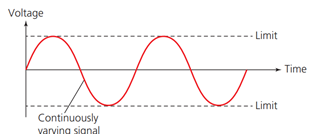
The most common example of an analogue signal is sound. When it’s necessary to store or transmit sound, it can change form without being destroyed.
If we use sound as an example, we can measure its speed. It is 340 m/s through air, or 750 miles per hour.
We can also measure the frequency and the amplitude. The frequency, or cycles per second, describes the pitch of the sound. The amplitude describes the volume of the sound.
Audio Signal Waveform
The audio signal waveform below is meant to represent a sound wave.
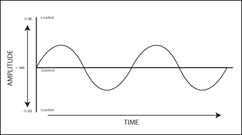
While it looks the same as the first image we saw, the difference is that the amplitude of the analogue audio signal is measured as an electrical voltage. This is known as the potential difference.
The units used to define the amplitude are either volts/millivolts or decibels relative to a voltage. The analogue audio signal has a peak and trough in each of its cycles.
Analogue audio signals are alternating currents. The peak voltage represents the maximum positive voltage and forward-flowing current. The trough represents the maximum negative voltage and backward-flowing current. The centre line represents zero voltage and is the point at which current switches direction.
Due to the range of amplitudes, frequency and phases involved, analogue signals are susceptible to more noise immunity than digital signals. Noise immunity is a measure of the insensitivity of a logic circuit to triggering or reacting to undesirable electrical signals or noise. This is largely determined by the signal swing of the logic.
What is signal noise?
In its most basic sense, signal noise is any unwanted interference that degrades a communication signal. Signal noise can also interfere with digital signals, but has a higher impact on analogue signals. The reason for this is that digital signals communicate using a set of electrical pulses to convey ‘bits’. These electrical pulses need a lot of noise in order to be confused with one another:
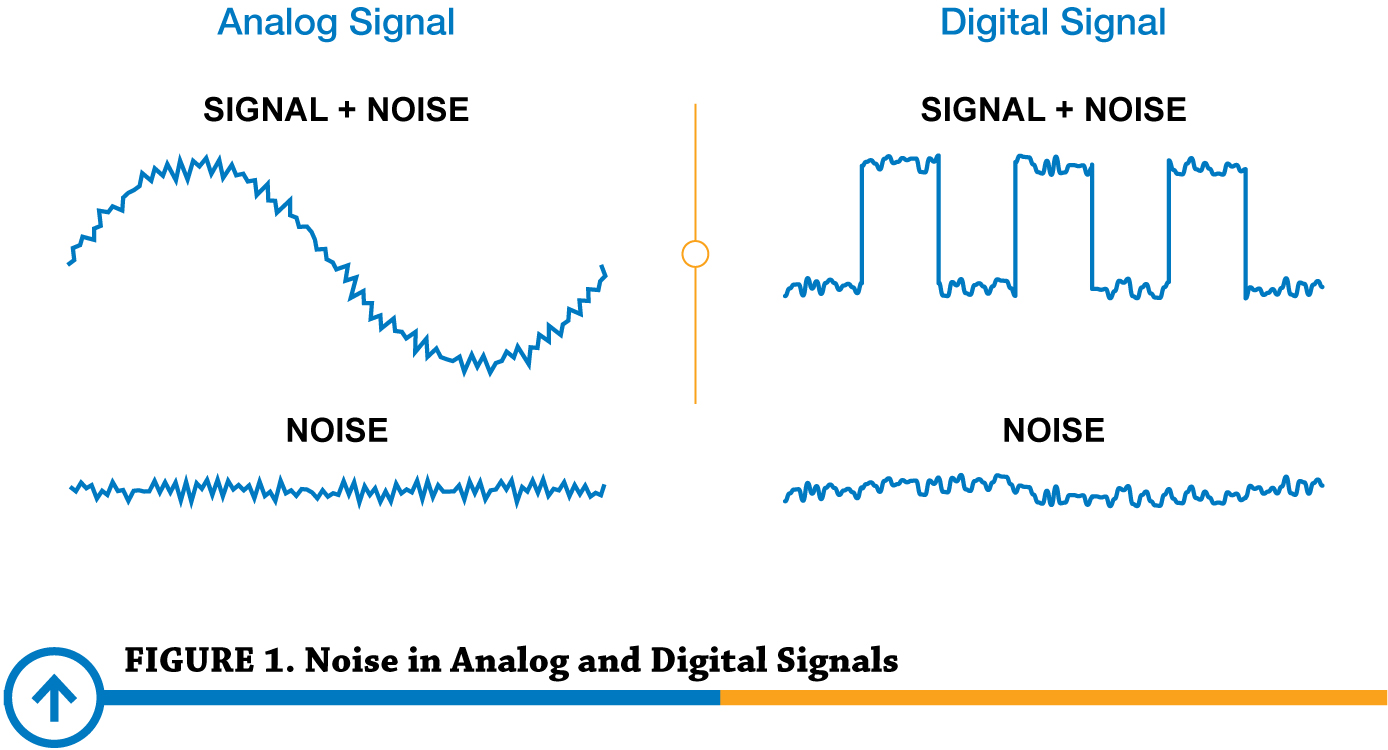
Analog signals represent an infinite range of possible values using an established range, such as 4–20 mA or 0–10 V. Any unwanted voltage or current spikes will cause a fluctuation in the message being communicated. Low levels of noise (millivolts or microamps) typically don’t result in a significant discrepancy.
High levels of electrical noise, however, can produce large variations and therefore lead to substantial discrepancies, making communication between process control devices utterly impossible.
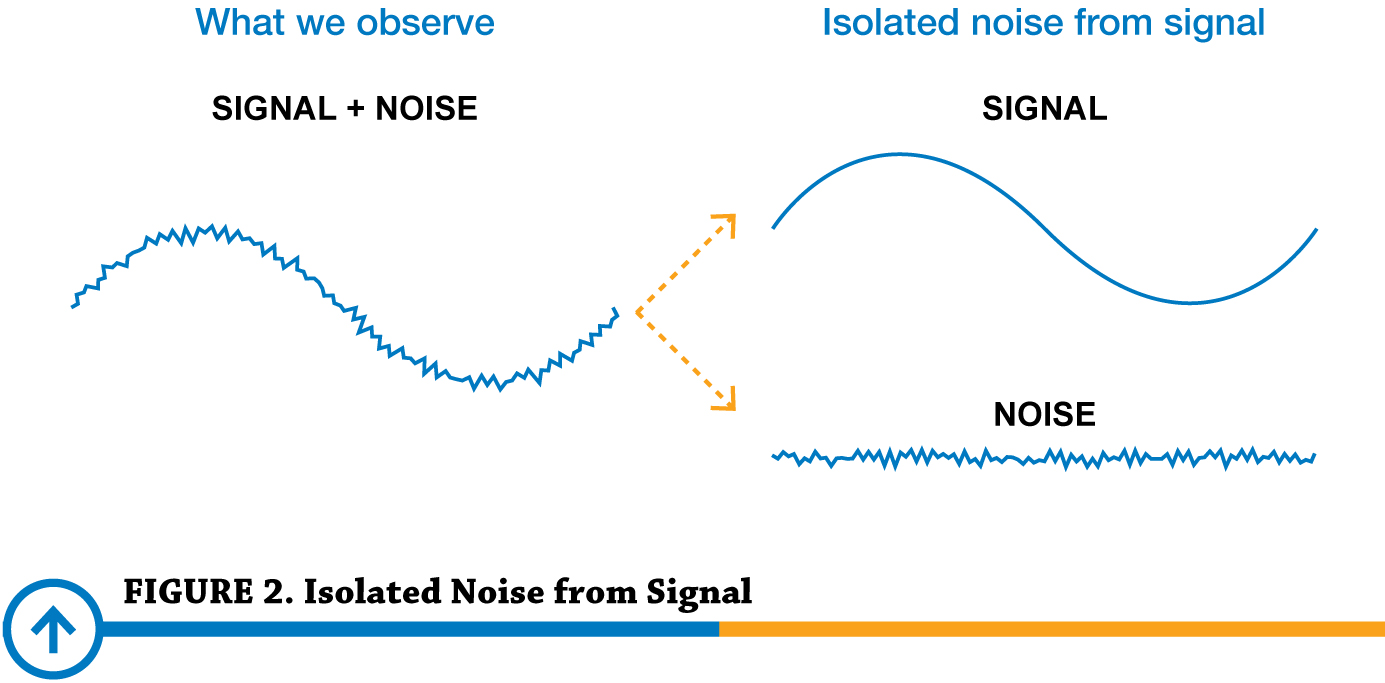
Signal noise injected onto electrical communication will add or detract from the expected signal value. In an industrial situation where vital processes are automatically controlled based on the measurement of that signal, any variation can lead to unpredictable and potentially damaging results.
What is Sound?
Sound is basically a waveform of energy that is produced by some form of mechanical vibration, such as a tuning fork, and which has a “frequency” determined by the origin of the sound, for example, a bass drum has a low frequency sound, while a cymbal has a higher frequency sound.
The sound wave relationship can be shown in the image below: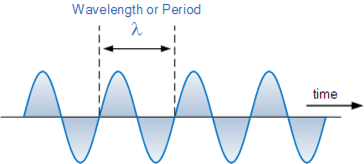
![]()
Where:
- Wavelength is the time period of one complete cycle in seconds (λ)
- Frequency is the number of wavelengths per second in hertz (ƒ)
- Velocity is the speed of sound through a transmission medium in m/s-1
Keep an eye out for our next articles, where we dive even further into analogue and digital electronics.
Interested in our courses?
You can read more about our selection of accredited online electrical and electronic engineering courses here.
Check out individual courses pages below:
Diploma in Electrical and Electronic Engineering
Higher International Certificate in Electrical and Electronic Engineering
Diploma in Electrical Technology
Diploma in Renewable Energy (Electrical)
Higher International Diploma in Electrical and Electronic Engineering
Alternatively, you can view all our online engineering courses here.
Recent Posts
Understanding and Calculating Generator Efficiency and Output Parameters
Understanding and Calculating Generator Efficiency and Output Parameters Introduction The performance of a generator is often judged by how efficiently it converts mechanical energy into electrical energy. Understanding and calculating this efficiency, along with other key output parameters such as voltage, current, power factor, and load, is essential for evaluating performance and ensuring reliable operation. […]
Essential Cooling and Protection Devices: How They Work and Why They Matter
Essential Cooling and Protection Devices: How They Work and Why They Matter Introduction Generators produce a significant amount of heat and electrical stress during operation, which can affect performance and lifespan if not properly managed. That’s where cooling and protection devices come in. These essential systems, including fans, radiators, circuit breakers, and relays, work together […]
Justifying the Choice of Generators Based on Requirements and Characteristics
Justifying the Choice of Generators Based on Requirements and Characteristics Introduction Selecting the right generator isn’t just about power output, it’s about finding a machine that meets specific operational needs, efficiency goals, and environmental conditions. Different applications demand different generator types, capacities, and features. In this article, we’ll explore how to justify the choice of […]

